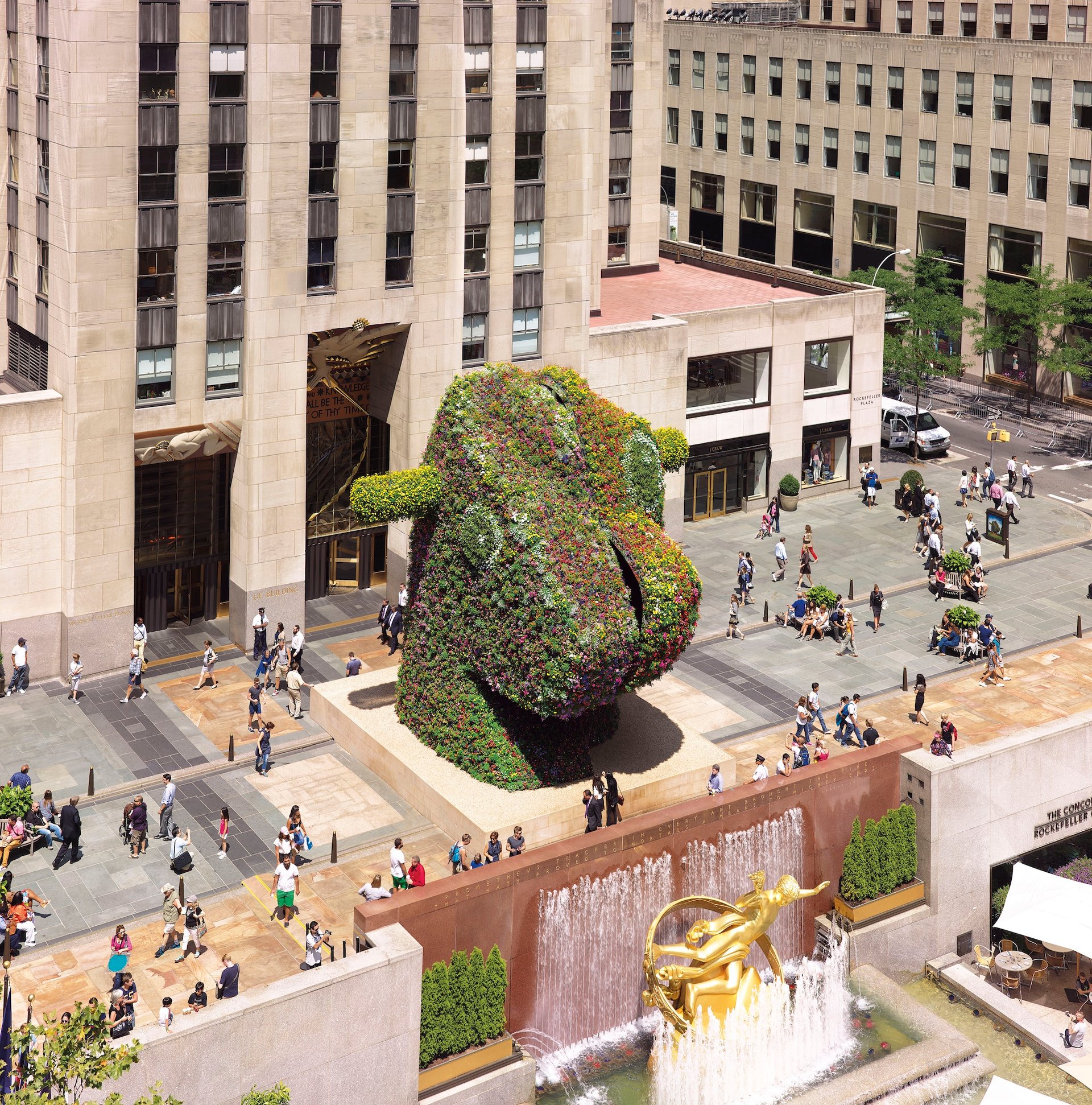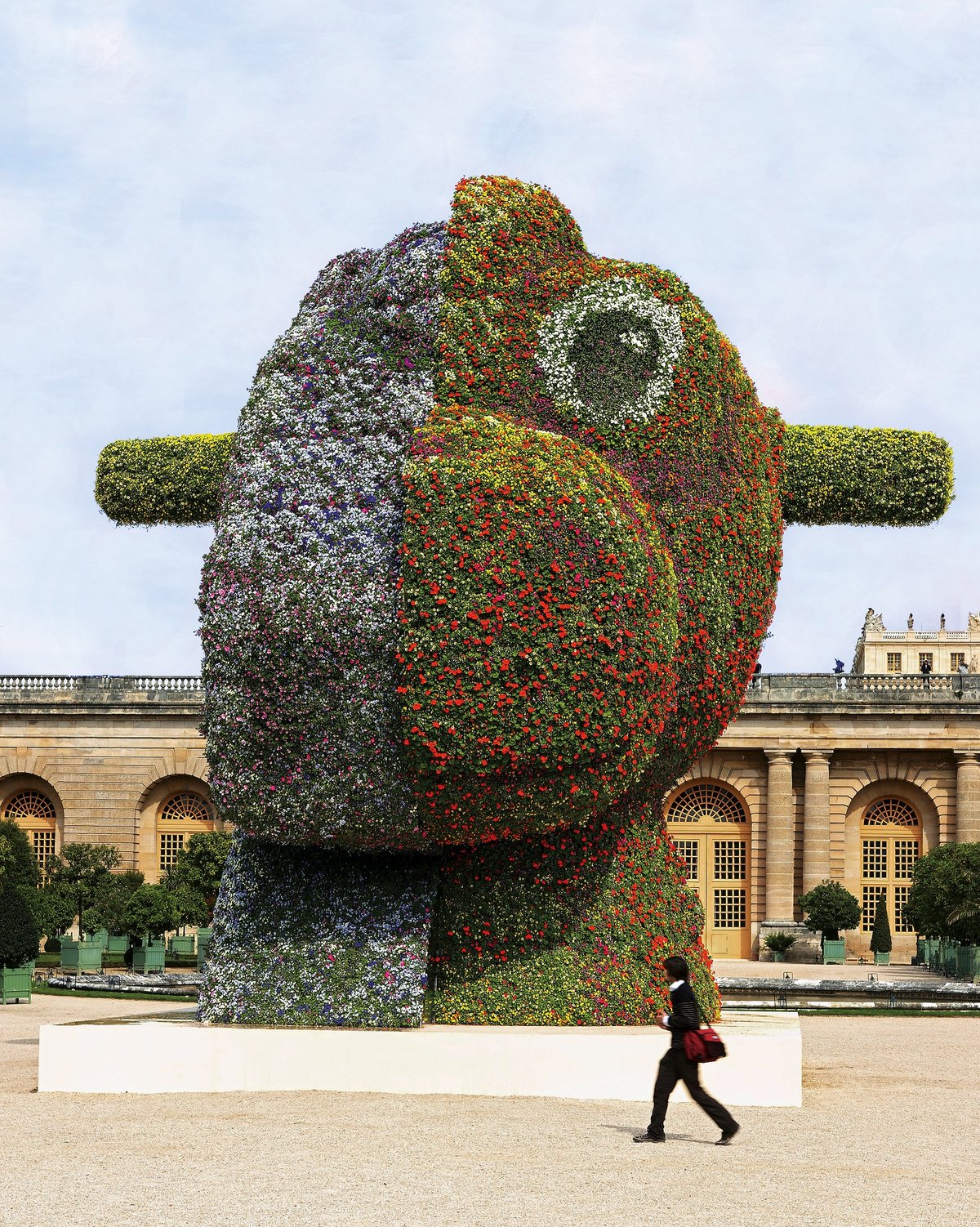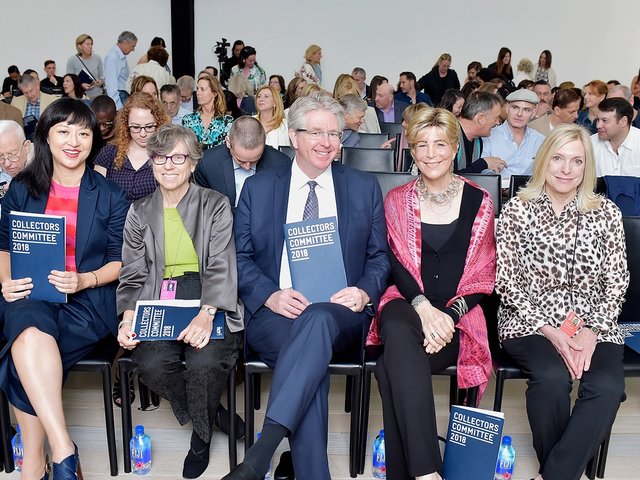The Los Angeles County Museum of Art’s (Lacma) campus has long been known for its magnetic and photogenic outdoor installations, from Chris Burden’s beacon along Wilshire Boulevard, Urban Light (2008), to Michael Heizer’s Land art intervention, Levitated Mass (2012). Now, as the museum prepares to open its $715m David Geffen Galleries next year, it has acquired a monumental floral sculpture by Jeff Koons to anchor the outdoor spaces around the new building.
Koons’s 37ft-tall Split-Rocker (2000) has been donated to Lacma by the collectors Lynda and Stewart Resnick, through their foundation, and will be installed and on view later this year. The sculpture features an enormous armature depicting two halves of the heads of children’s rocking toys (one a pony, the other a dinosaur), which are embedded with more than 50,000 flowering plants.
“I couldn’t be more thrilled than to have a piece of floral work in Los Angeles where—horticulturally—there’s such a wide variety of plants that can be used in its creation,” Koons told the Los Angeles Times. “I hope people going back and forth on Wilshire Boulevard, and people visiting the museum, are able to enjoy and experience the change in the piece.”

Jeff Koons, Split-Rocker (2000), installed at Rockefeller Center, New York City, in 2014 © Jeff Koons, photo by Tom Powel
The sculpture had its debut in 2000 at the Palais des Papes in Avignon, then was installed at the Château de Versailles in 2008, the Fondation Beyeler in Basel in 2012, Glenstone in Maryland in 2013 and at Rockefeller Center in New York in 2014. Koons created two versions of the work, one edition plus an artist’s proof; the version going to Lacma is the latter (the other belongs to Glenstone).
“Jeff is a master of bringing bold playfulness together with layers of deeper artistic meaning,” Michael Govan, Lacma’s chief executive and director, said in a statement. “And, uniquely among four of Jeff's flower sculptures worldwide, Lacma’s will be alive and growing year-round in the mild climate of Southern California.” (The artist’s only other large-scale floral sculpture, 1992’s Puppy, also exists in one edition and an artist’s proof.)
The Resnicks are longtime supporters of Lacma, Lynda served on the museum’s board for nearly a quarter century and is now a life trustee, and the campus’s 2010 addition, the Resnick Pavilion, was named in honour of them. Their foundation will also fund the ongoing maintenance of Split-Rocker.
The playful tower of flowers joins three other Koons works in Lacma’s collection. In 2005 the museum acquired the stainless steel J.B. Turner Engine (1986), a sculpture based on a train-shaped bottle of Jim Beam bourbon, from the artist’s Luxury and Degradation series appropriating liquor advertising and merchandise. The museum also owns two examples of Koons’s handbag collaboration with Louis Vuitton: one featuring an image of the Mona Lisa, the other emblazoned with Titian’s Mars, Venus, and Cupid (around 1550).
Other outdoor works coming to the plazas and gardens surrounding the David Geffen Galleries building include new commissions by Shio Kusaka and Mariana Castillo Deball, and the reinstallation of Alexander Calder’s three-part mobile Three Quintains (Hello Girls) (1964).
The David Geffen Galleries, housed in a building designed by Peter Zumthor that stretches over Wilshire Boulevard, will be devoted to showcasing Lacma’s permanent collection when they open to the public next year. In the meantime, a series of performances and preview events will allow museum members and the public to visit the building before its finishing touches are applied and art is installed.
This is not the first time Govan has sought to bring a large-scale outdoor work by Koons to Lacma. In 2007 it was revealed that the museum intended to build Koons's Train, a full-scale replica of a 1940s steam locomotive that would dangle from an enormous crane and, three times a day, spin its wheels, blow its horn and spew steam. The project was ultimately abandoned because it proved too expensive (around $25m) and logistically complicated. A subsequent plan to install it over the High Line park in New York never left the station. By comparison, keeping 50,000 plants alive seems like child’s play.







